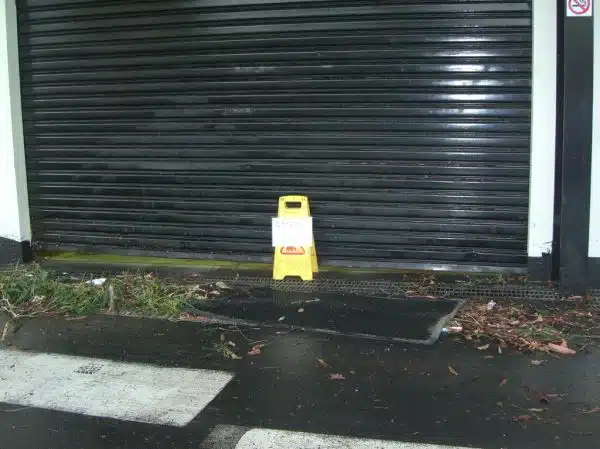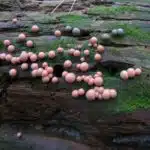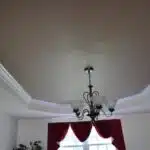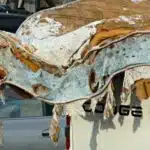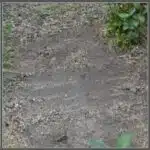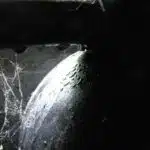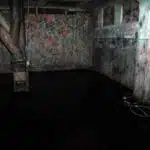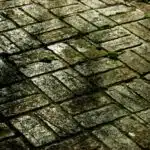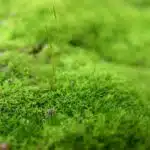Water damage can be catastrophic, causing significant harm to homes and businesses. In addition to structural damage, water damage can lead to mold growth, which poses a severe health risk to occupants. Mold is a fungus that thrives in damp and humid environments, making it a common occurrence after water damage. It is crucial to prevent mold growth after water damage occurs.
As a water damage restoration specialist, I have seen the devastating effects of mold growth on property owners and their loved ones. It is essential to take preventive measures as soon as possible after water damage occurs. This article will provide you with helpful tips on how to prevent mold growth after water damage and keep your home or business safe from potential health hazards.
Understanding The Dangers Of Mold Growth
Like a silent thief in the night, mold can grow undetected and wreak havoc on your home or business. Understanding mold prevention is crucial to keeping your property safe. Not only is it unsightly, but it can also pose significant health risks to those exposed to it.
Mold spores are everywhere, and they thrive in moist environments. When water damage occurs, whether from a flood or a leaky pipe, mold growth becomes a real threat. The longer the moisture remains, the more likely it is that mold will take hold. Once it does, it can spread quickly and become challenging to eradicate.
The health risks of mold growth cannot be overstated. Exposure to mold can cause respiratory problems, allergies, and other severe health issues. Individuals with compromised immune systems are particularly vulnerable. As a water damage restoration specialist, my goal is to help you understand the dangers of mold growth so that you can take steps to prevent it from taking hold in your property.
As you begin the process of restoring your property after water damage has occurred, understanding how to prevent mold growth must be at the forefront of your mind. However, before we dive into that topic, let’s first identify the signs of water damage so that we can address any existing issues before they lead to further problems down the line.
Identifying The Signs Of Water Damage
Water damage is a common issue that many homeowners and business owners face. It can lead to costly repairs, health hazards, and even structural damage if left untreated. Therefore, it’s crucial to identify water damage signs early on to prevent further damage and ensure the safety of your property.
One of the most common signs of water damage is discoloration or staining on walls, ceilings, and floors. If you notice any brownish or yellowish spots on these surfaces, it could indicate water damage. Additionally, peeling paint or wallpaper could be a sign that moisture has penetrated the surface underneath.
Another sign of water damage is a musty or unpleasant odor in your home or business. This odor is often caused by mold growth resulting from excess moisture in the air. If you smell this musty odor in a particular area of your property, it’s essential to investigate further as mold can cause health issues for occupants.
Lastly, warped or buckled floorboards could also indicate water damage. If you notice any unevenness in your floors or find them difficult to walk on, it’s best to investigate the cause immediately. Water damage prevention requires prompt attention and identification of these tell-tale signs before they escalate into more significant problems.
Identifying water damage signs early on can save you time and money in the long run. By keeping an eye out for these indicators, you can take action before irreparable harm occurs. However, when dealing with water damage prevention, acting quickly is key to minimizing damages and preventing further complications from arising.
Acting Quickly To Address Water Damage
Assessing damage is the first crucial step in preventing mold after water damage. It’s essential to determine the extent of damage and identify any potential areas where mold may grow. This assessment will allow you to take appropriate measures to prevent mold growth before it becomes a more significant issue.
Contacting professionals is another important step when dealing with water damage. Certified restoration specialists have the necessary skills, equipment, and expertise to handle water damage effectively. They can help you identify the source of the problem, provide adequate solutions, and mitigate further damages. By working with professionals, you can ensure that your property is restored safely and efficiently.
Acting quickly is critical when it comes to addressing water damage. The longer standing water remains on your property, the higher the likelihood of mold growth and other problems such as structural damages. Therefore, it’s crucial to address water damage promptly by assessing the extent of harm, contacting professionals for help, and taking appropriate measures to prevent mold growth before it becomes a more significant issue.
Transition: Now that we’ve assessed the extent of damage and contacted professionals for help let’s move on to the next step- removing standing water from your property.
Removing Standing Water
As a water damage restoration specialist, the first step in preventing mold after water damage is to remove any standing water. Standing water is a breeding ground for mold and bacteria, which can lead to serious health problems if left unchecked. To remove standing water, there are two main methods that we use: vacuuming debris and using sump pumps.
Vacuuming debris involves using a powerful vacuum to extract the standing water and any debris that may be present. This method is effective for small areas of standing water, such as those caused by a leaky pipe or appliance malfunction. It’s important to note that not all vacuums are suitable for this task – only those specifically designed for wet/dry use should be used.
In larger areas where the amount of standing water is too great for vacuuming, we use sump pumps. Sump pumps are designed to remove large volumes of water quickly and efficiently. They work by pumping the standing water out of the affected area and into a nearby drain or outside space. Once all standing water has been removed, it’s time to move on to drying out the affected areas in order to prevent mold growth from occurring.
To effectively prevent mold after water damage, it’s crucial that all standing water is removed from the affected area as quickly as possible. By using either vacuuming debris or sump pumps, we’re able to accomplish this task efficiently and effectively. However, removing standing water is just the first step in this process – next up is drying out the affected areas in order to prevent mold growth from occurring.
Drying Out Affected Areas
After removing all standing water, it is crucial to prevent mold growth by implementing moisture control and air circulation. Mold thrives in damp and stagnant environments, making it essential to address these conditions as quickly as possible. By ensuring that the affected areas are kept dry and properly ventilated, you can significantly reduce the risk of mold growth.
To control moisture levels, use dehumidifiers and fans to circulate air throughout the space. This will help to remove excess humidity and prevent condensation from forming on surfaces. It is also important to monitor the humidity levels regularly using a hygrometer. Aim for a relative humidity level between 30-50%, anything above this range provides a favorable environment for mold growth.
In addition to controlling moisture and air circulation, it is also necessary to disinfect all surfaces that have been affected by water damage. Disinfecting surfaces will eliminate any existing mold spores or bacteria that may cause further damage or health problems. In the next section, we will discuss how to properly disinfect surfaces after water damage.
Disinfecting Surfaces
It is commonly believed that bleach is the best disinfectant option after water damage. However, recent studies have shown that bleach can actually promote mold growth by leaving behind organic matter on surfaces. This organic matter serves as a food source for mold, allowing it to thrive and spread. Therefore, it is important to consider alternative disinfectant options that are effective yet safe for use.
When selecting a disinfectant, it is crucial to choose one that is approved by the Environmental Protection Agency (EPA) for use against mold and mildew. These products have been tested and proven to effectively eliminate mold spores on surfaces when used properly. It is also important to follow proper application techniques, such as wearing protective gear and allowing sufficient dwell time for the disinfectant to work.
Properly disinfecting surfaces after water damage can significantly reduce the risk of mold growth in your home or business. By using EPA-approved disinfectants and following proper application techniques, you can ensure that your property is thoroughly cleaned and disinfected. In the next section, we will discuss the importance of using fans and dehumidifiers in conjunction with surface disinfection to further prevent mold growth.
Using Fans And Dehumidifiers
After water damage, it is essential to dry out the affected area as soon as possible to prevent mold growth. One of the most effective ways to accomplish this is by using fans and dehumidifiers. Not only do they speed up the drying process, but they also help maintain proper humidity levels, which can further prevent mold growth.
Benefits of using fans and dehumidifiers
- Fans create air movement that helps evaporate moisture from wet materials.
- Dehumidifiers remove excess moisture from the air, reducing the risk of mold growth.
- Using both together can significantly reduce drying time and lower the risk of secondary damage.
Tips for choosing the right fans and dehumidifiers
- Choose a fan with enough power to move air throughout the entire affected area.
- Consider purchasing a dehumidifier with automatic shut-off features to prevent over-drying.
- Renting equipment may be more cost-effective than purchasing, especially for one-time use or smaller jobs.
When using fans and dehumidifiers, it’s essential to follow safety guidelines carefully. Make sure all electrical cords are properly grounded, and never place equipment in standing water or on wet surfaces. With proper usage, these tools can be incredibly effective in preventing mold growth after water damage.
As you begin drying out the affected area with fans and dehumidifiers, you’ll likely find that some materials have been irreparably damaged by water. In the next section, we’ll discuss how to safely remove these items to make way for repairs.
Removing Damaged Materials
- Identifying mold growth requires paying close attention to visible signs that may indicate the presence of mold, such as discoloration or unusual patterns of growth.
- It is important to discard contaminated materials to prevent further mold growth and health issues.
- It is also important to clean surfaces to remove mold spores that may have been spread throughout the area.
- Prolonged exposure to mold can cause serious health issues, so it is recommended to wear protective gear when working with mold-contaminated materials.
- Applying a dry-cleaning method to remove mold is recommended, as this helps to minimize the spread of mold spores.
- Using a detergent solution or bleach solution followed by a thorough drying process is also recommended for removing mold from surfaces.
Identifying Mold Growth
As water damage restoration specialists, it’s crucial to identify mold growth after a flood or any water-related disaster. Mold can easily grow within 24 to 48 hours, so early detection is key to preventing its growth. Understanding the common types of mold and their characteristics can help you identify them quickly.
One of the most common types of mold found in homes is Stachybotrys chartarum or black mold. It’s known for its musty odor and dark green or black appearance. Aspergillus is another type of mold that typically appears as yellow-green or brown patches on surfaces. Cladosporium, on the other hand, often appears as black or green spots and can cause respiratory issues.
To prevent further growth and spread of mold, it’s essential to remove all damaged materials immediately. This includes carpets, drywall, insulation, and any other porous materials that may have absorbed moisture. Once these materials are removed, thoroughly clean and disinfect the area using products specifically designed for mold removal.
In conclusion, identifying mold growth after water damage is crucial to preventing further damage to your home and protecting your health. By understanding the common types of mold and their characteristics, you can quickly identify them and take necessary precautions. Always remember to remove all damaged materials promptly and thoroughly clean the area to prevent future growth.
Discarding Contaminated Materials
As water damage restoration specialists, our priority is to ensure the safety and health of our clients. One crucial aspect of this is properly disposing of contaminated materials during the removal process. These materials can pose significant health risks if not disposed of correctly.
When removing damaged materials, it’s important to remember that they may contain harmful substances such as mold, bacteria, and other contaminants. Proper disposal is critical to prevent these substances from spreading and causing further harm. This involves following local regulations for hazardous waste disposal and using appropriate protective equipment during the removal process.
Failure to dispose of contaminated materials properly can result in serious health risks, including respiratory issues, allergic reactions, and infections. As such, we always prioritize proper disposal methods to minimize any potential harm to our clients and their families. It’s essential for water damage restoration specialists to take this responsibility seriously and ensure that all contaminated materials are disposed of safely and efficiently.
Cleaning Surfaces
As water damage restoration specialists, our main priority is to ensure the safety and health of our clients. After removing damaged materials from a water-damaged area, it’s essential to clean surfaces as well. Cleaning techniques are critical in preventing the spread of harmful substances such as mold, bacteria, and other contaminants.
There are several cleaning techniques that we use as water damage restoration specialists when cleaning surfaces. One method is dry brushing or vacuuming to remove loose debris and dirt. Wet wiping or mopping with disinfectants is another technique we use to clean hard surfaces. Porous surfaces such as carpets may require steam cleaning to remove any remaining contaminants effectively.
Prevention methods are also crucial in maintaining a healthy environment after the cleanup process. As part of our service, we educate our clients on prevention methods they can implement in their homes or offices. These include proper ventilation, controlling humidity levels, regular maintenance checks for plumbing and appliances, and promptly reporting any signs of water damage.
In conclusion, cleaning surfaces after removing damaged materials is an essential step in restoring a safe environment after water damage. Our team of specialists implements effective cleaning techniques and educates our clients on prevention methods to maintain a healthy living or working space long-term.
Inspecting Hidden Areas For Mold Growth
Have you recently experienced water damage in your home or business? If so, it is crucial to check for any potential mold growth. Mold can easily hide in hidden areas of your property that are not visible to the naked eye. Therefore, it’s important to inspect common hiding spots where mold typically grows.
Common hiding spots include attics, crawl spaces, and basements. These areas are often dark and damp, making them the perfect environment for mold growth. It’s essential to inspect these areas thoroughly to prevent mold from spreading throughout your property. A professional inspection can provide many benefits, such as identifying potential problem areas and providing recommendations on how to prevent future mold growth.
Professional inspection benefits go beyond just identifying mold growth. Inspectors can also assess the extent of the damage caused by the water and provide recommendations on how to address it properly. They may suggest removing damaged materials or using specialized equipment to dry out affected areas. By addressing these issues promptly and correctly, you can prevent any further damage or health hazards from developing.
Now that you have inspected all potential hiding spots for mold growth, it’s time to seal off contaminated areas if necessary. This step will help contain the spread of mold spores and prevent them from contaminating other parts of your property. By following these steps, you can ensure that your property is safe from further damage and that you’re taking necessary precautions to prevent future mold growth.
Sealing Off Contaminated Areas
After inspecting hidden areas for mold growth, the next step is to seal off contaminated areas. This is done to prevent spores from spreading to other parts of the building and contaminating clean areas. Sealing off the area also protects individuals from inhaling mold spores which can cause respiratory problems.
There are several ways to seal off a contaminated area. One method is to use plastic sheeting and duct tape to create a barrier around the affected area. Another option is using negative air pressure machines that create a vacuum in the contaminated space, preventing any mold spores from escaping into clean spaces.
While sealing off contaminated areas can help prevent further mold growth, it’s important to note that this is not a permanent solution. If the water damage was extensive or left untreated for an extended period, there may be hidden pockets of moisture that can continue to fuel mold growth. In such cases, it’s best to seek professional assistance.
- Use dehumidifiers and fans to dry out the affected area as soon as possible.
- Remove any wet or damp materials such as carpet padding and insulation.
- Clean hard surfaces with soap and water or a mixture of vinegar and water.
- Dispose of any items that cannot be thoroughly cleaned or dried.
- Consider using an antimicrobial spray after cleaning to inhibit future mold growth.
While DIY methods can be effective in small cases of water damage, larger instances require professional attention. A restoration service has specialized equipment and techniques that ensure complete removal of mold and prevention of future growth. Additionally, professionals have the necessary safety gear and training for handling hazardous materials like mold spores. Hiring a professional restoration service ensures thorough remediation and provides peace of mind for property owners.
Hiring A Professional Restoration Service
Hiring a professional restoration service is highly recommended after experiencing water damage. There are several benefits to hiring a professional team, including their expertise in identifying the extent of the damage, knowledge of industry-standard techniques, and access to specialized equipment. By contracting a professional service, you can be confident that your home or business will be restored to its pre-damage condition.
While some homeowners may attempt to restore their property themselves, this can often result in improper cleaning and inadequate drying methods, which can lead to mold growth. A professional water damage restoration team has the necessary experience and training to assess the situation accurately and determine the most effective course of action. This not only ensures that all moisture is removed from your home or business but also prevents any further damage from occurring.
Although many individuals believe that hiring a professional restoration service is costly, it can actually be cost-effective in the long run. A professional team has access to specialized equipment that quickly removes water and moisture from your property. As a result, they can effectively prevent mold growth before it becomes a significant problem. In contrast, attempting to address water damage on your own may lead to additional costs due to improper handling of the situation.
Ensuring that your home or business remains dry after water damage is crucial for preventing mold growth. In the next section, we will discuss practical steps you can take to keep your property dry and healthy. By implementing these measures alongside hiring a professional restoration service, you can rest assured knowing that you have taken all necessary precautions against mold growth and other forms of property damage.
Keeping Your Home Or Business Dry
Water damage can be a nightmare for homeowners and business owners alike. One of the biggest threats after water damage is mold growth. Mold can grow quickly and spread throughout the affected area, causing health problems for everyone exposed to it. To prevent mold growth, it is essential to keep your home or business dry.
Water extraction is the first step in preventing mold growth after water damage. Standing water must be removed as soon as possible to prevent further damage and minimize the risk of mold growth. A professional restoration company will have specialized equipment that can extract water quickly and efficiently.
Moisture control is also vital in preventing mold growth after water damage. Even after all visible standing water has been removed, there may still be moisture hidden within walls, floors, or ceilings. Restoration specialists use specialized tools like moisture meters to measure the amount of moisture present in these areas. By drying out any remaining moisture, you can prevent mold from growing and spreading.
With proper water extraction and moisture control measures in place, you can significantly reduce the risk of mold growth after water damage occurs. However, it’s important to remember that prevention is key when dealing with these issues. In the next section, we’ll discuss how to fix leaks and address any existing water damage to prevent future issues from arising.
Fixing Leaks And Water Damage
When faced with water damage caused by leaks or floods, it is crucial to act quickly. One of the first steps to take is identifying and repairing any broken pipes or damaged plumbing systems. This will prevent further water intrusion and minimize the risk of mold growth.
Once the source of water damage has been fixed, it is important to take measures to prevent future incidents. Implementing waterproofing techniques can help protect your property from future water damage. This may include installing sump pumps or using sealants on walls and floors in areas prone to moisture.
Preventing mold growth after water damage also involves maintaining a dry environment. Ensure proper ventilation in areas that are prone to humidity, such as bathrooms and kitchens. Additionally, regularly checking for leaks and addressing them promptly can help prevent mold from taking hold in your home or business. By taking these precautions, you can effectively manage water damage and minimize the risk of mold growth in your property.
Monitoring Your Home Or Business For Mold
As a water damage restoration specialist, preventing mold after water damage is a crucial step in the restoration process. Mold can grow within 24-48 hours of water damage, making it necessary to act quickly to prevent its growth. There are several mold prevention strategies that you can implement to protect your home or business from mold growth.
Firstly, ensure proper ventilation in the affected area. Proper ventilation helps to reduce humidity and moisture levels, which are conducive for mold growth. You can also use dehumidifiers and air conditioners to regulate humidity levels in the affected area. Secondly, remove any wet or damp materials immediately as they can provide a breeding ground for mold spores. This includes carpets, furniture, and curtains among others. Finally, clean and disinfect all surfaces using an appropriate cleaner before drying them completely.
Mold testing options are also available if you suspect that your home or business has been affected by mold growth. Several professional testing services can help identify the presence of mold in your property accurately. Testing helps determine the type of mold present and the extent of infestation, which is crucial in developing a remediation plan.
Educating yourself about mold prevention is essential in protecting your home or business from potential health hazards associated with mold growth. As mentioned earlier, acting fast is critical in preventing further damage from water leaks or floods that lead to mold infestations. Additionally, it is always advisable to seek professional help when dealing with water damage and suspected mold growth as they have the expertise and equipment required to restore your property effectively.
Educating Yourself About Mold Prevention
Water damage can be a nightmare for homeowners, leading to costly repairs and potential health hazards. The importance of prevention cannot be overstated. Mold is one of the most significant risks following water damage, and it can grow quickly if not addressed promptly. Taking preventative measures can save you from the headache of dealing with mold and its harmful effects.
Many people have misconceptions about mold prevention. One common misconception is that bleach will kill mold. While it may seem like an easy fix, bleach can actually make the problem worse by spreading spores around your home. Another misconception is that you only need to worry about mold growth in humid climates or during the summer months. Unfortunately, mold can grow in any environment where moisture is present, so it’s essential to take preventative steps year-round.
To prevent mold growth after water damage, it’s crucial to act quickly and thoroughly address any areas affected by water. This includes drying out carpets, furniture, and other items as soon as possible. Additionally, using a dehumidifier or opening windows can help remove excess moisture from the air. Regularly inspecting your home for leaks or other sources of water damage can also help prevent mold growth before it begins.
Remember that preventing mold growth after water damage requires proactive measures and a commitment to thoroughness. By educating yourself on common misconceptions and taking preventative steps year-round, you can protect your family and your home from the dangers of mold growth.
Conclusion
Mold growth is a serious concern after water damage occurs in a home or business. The dangers of mold can lead to health issues and structural damage, making prevention crucial. Identifying signs of water damage and acting quickly is key to preventing mold growth. Removing standing water and drying out affected areas are essential steps in the restoration process. Keeping your property dry and fixing leaks promptly can prevent future water damage from occurring.
As a professional in the water damage restoration industry, I understand the importance of educating yourself about mold prevention. Regularly monitoring your property for signs of mold growth and addressing any issues immediately is essential in preventing potential health risks and costly damages. By following these preventative measures, you can ensure a safe and healthy environment for yourself, your family or employees, and your property for years to come. Don’t wait until it’s too late – take action now to prevent mold growth after water damage occurs.
Image Credits
- “Closed due to water damage – Holmesglen BWS” by avlxyz (featured)

